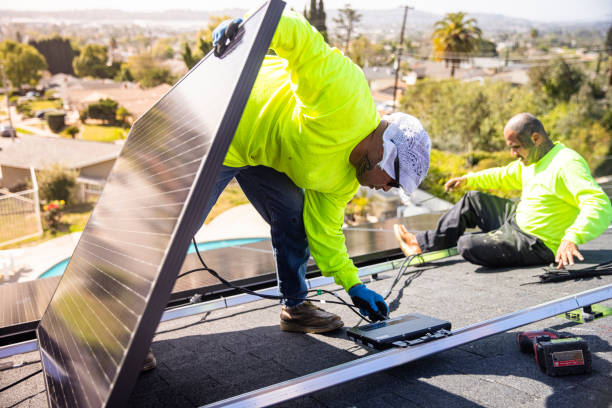The increasing adoption of electric vehicles (EVs) and home energy storage is transforming how households in Perth manage their electricity. Modern solar inverters Perth are now at the centre of this shift, enabling the seamless integration of solar panels, EV chargers, and home batteries into a unified energy management system. This integration allows property owners to generate, store, and use electricity more efficiently, reducing reliance on the grid and lowering long-term energy costs.
The Role of Solar Inverters in Energy Management
A solar inverter is responsible for converting direct current (DC) electricity generated by solar panels into alternating current (AC) used by home appliances and the grid. However, in advanced setups, inverters do more than simple conversion—they act as intelligent energy managers. They monitor energy generation, household demand, battery charge levels, and EV charging requirements to optimise how electricity is distributed throughout the property.
Integration with Home Batteries
When paired with a solar battery Perth, the inverter becomes the communication link between solar generation and storage. During daylight hours, excess solar power charges the battery instead of being exported to the grid. At night or during peak demand, stored energy can be released to power the home or even recharge an EV, reducing grid dependency. This setup allows energy to be used where and when it’s most needed, maximising self-consumption and efficiency.
Integration with EV Chargers
EV chargers integrated with solar inverters can automatically prioritise renewable energy use. For example, when solar output is high, the inverter directs surplus electricity to charge the EV. When generation drops, it switches to battery power or grid supply, depending on settings. Smart charging systems also allow users to schedule charging during off-peak hours or periods of high solar output, ensuring both cost and energy efficiency.

Unified Smart Energy Systems
Combining solar, battery storage, and EV charging creates a closed-loop energy ecosystem. The inverter serves as the control hub, often connected to a central monitoring app that provides real-time data on power flow, consumption, and savings. This integrated system supports features such as load balancing, demand response participation, and automated grid export control, ensuring optimal performance under varying conditions.
Benefits of Integrated Systems
- Maximised Energy Utilisation: Solar energy is consumed directly or stored for later use, minimising waste.
- Reduced Energy Bills: Less reliance on grid electricity lowers ongoing costs.
- Sustainability: Maximises renewable energy use, reducing carbon footprint.
- Future-Proofing: Supports upcoming technologies like vehicle-to-home (V2H) and vehicle-to-grid (V2G) energy sharing.
- Enhanced Control: Smart inverters allow remote monitoring and management of all connected systems.
Future Outlook
As energy technology evolves, more inverters will feature AI-driven optimisation, enabling predictive charging and load management. Future solar power systems may automatically determine the most cost-effective and sustainable energy distribution between the home, battery, and EV based on weather forecasts, usage habits, and real-time grid data.
Conclusion
Integrated solar energy systems represent the future of household energy management. By combining solar inverters, EV chargers, and home batteries, Perth homeowners can achieve a more efficient, sustainable, and independent power solution. This holistic approach not only reduces costs but also contributes to a cleaner and more resilient energy future.

